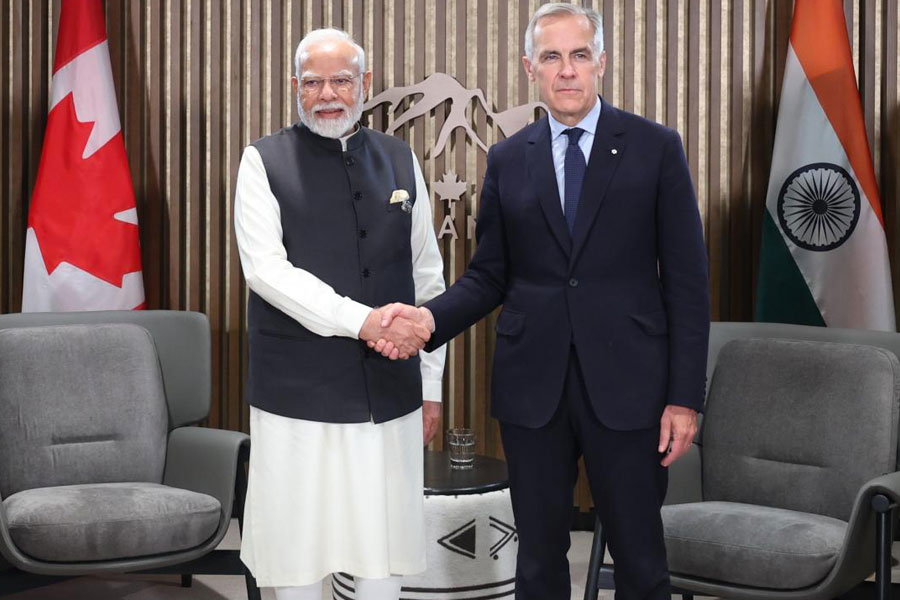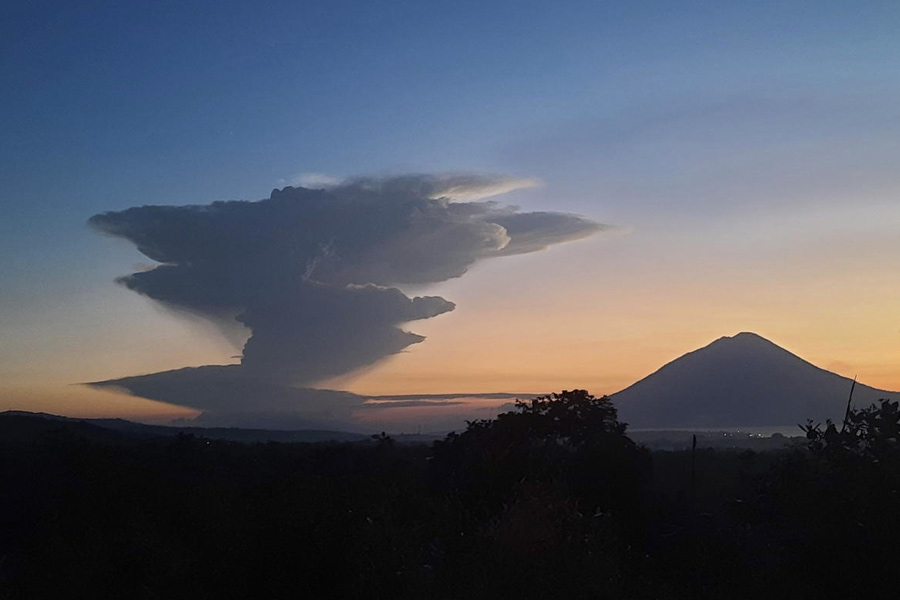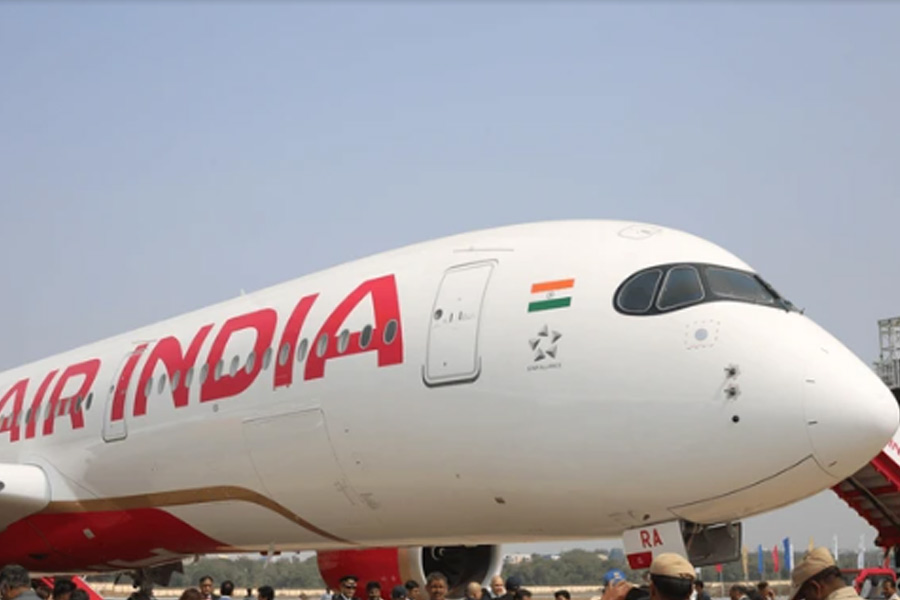|
|
The Calcutta International Centre is as stirred by the change of guard in West Bengal as all non-communists. It would like to turn West Bengal into one of India’s leading states over the next two decades. It conceives of progress in three dimensions — administrative, cultural and economic. That is a realistic plan; if one tries to change an entire state, progress can only be measured in decades, not in months and years. But I do not have so much time; much before 2030 I will become adviser to the king of Arcadia, and will have no use for the pleasures of this world. The chief minister of West Bengal has longer to go, but unless she changes the perceptions of her people in four years, she will have nowhere to go except the railway ministry — if she is lucky in the stars of her ally. She should focus on short-term achievements — even if they are as trivial as renaming West Bengal. What is that West doing there? Why has it stuck on six decades after Partition? Does anyone care for, let alone dream of, united Bengal any more? The other Bengal never bothered to call itself Bengal. It appropriated the title of Bangladesh. Can West Bengal not even attain the status of Bengal? So the name is the first thing I would make in Bengal.
I have written before in this column about what to do with Bengal; though the memory of readers is even shorter than a columnist’s, I would rather not repeat myself so soon. Let me take off from the point I made long ago. Bengal has had a glorious industrial past. Some day it may return, but it will not do so soon. If one wants quick development, one must think of something else. Bengal did quite well in agriculture in the past two decades, and it is worth thinking further about. But one should think beyond agriculture. Bengal should aim to attract more tourists. Foreign tourists will not come easily; they have more choice, and are more finicky. Indian tourists will be easier to attract; they are the ones Bengal should concentrate on.
Andhra Pradesh is good enough to look at, but it is nothing great. But it was the state that attracted the largest number of domestic tourists in 2010 — 155 million. What makes it so popular? Not Horsley Hills. Not Mogala Rajapuram caves. It is Tirupati temple, which takes much climbing to get to. Even Vijay Mallya treks up there after one of his lucky strikes.
Uttar Pradesh comes next with 145 million. No prize for guessing: it is the Taj Mahal. This single monument has the highest brand value in the world; it is on top of the must-see sights of many people who cannot bear the thought of India.
Tamil Nadu comes third with 111 million. True, it has Kanyakumari, on whose terminal rock Swami Vivekananda meditated; although no longer so pristine, it is still beautiful. True, it has some nice hill stations — Ooty, Kodi, Coonoor, Yercaud, Yelagiri. But the sights that attract hordes are the temples: Meenakshi, Pazhamudircholai and Tirupparankundram in Madurai; Shanmuganathan and Ucchi Pillayar in Trichinopoly; Gangadeeswarar, Khabartheesar Karpaga Nathar, Swaminatha Swami Thirukovil, Abhishtha Varada Maha Ganapathy and Navaneetheswara Swamy in Tanjore; and Arulmigu Subramanya Swamy in Tirupur. Tamil Nadu also has extremely good roads, and an excellent state bus service.
Next is Maharashtra with 48 million. It is famous for Ajanta and Ellora caves; but the reason why it comes so high in the list is Bombay, which combines the largest number of well-to-do people in India with a hot and humid climate. They all want to get away, and luckily for them, the Western Ghats are only a couple of hours away. So the nearby hill stations — Matheran, Khandala, Lonavala and Poona — attract huge numbers of weekend visitors. This is the only state in which a brand new hill station is being developed — Lavasa. Incidentally, Maharashtra attracted the largest number of foreign tourists — 5.1 million in 2010 — even more than Uttar Pradesh.
Karnataka, next with 38 million, offers a menu similar to Maharashtra’s. It has preserved its hills better — it has 25 wildlife sanctuaries and five national parks. Attractions in Karnataka are extremely well organized; starting from Bangalore, one can take in Seringapatam on the way to Mysore; after seeing the palaces there, one can drive up into the hills teeming with wild animals. For those who treasure ancient monuments, there are Belur, Halebid and Hampi. Aihole teems with ancient temples; and since they are disused, one does not have to join crowds or pay baksheesh. If anyone wanted to see only one state in India, I would recommend Karnataka.
Next comes Madhya Pradesh with 38 million. It is best known for the erotica of Khajuraho; but Orchha is more captivating. Although it is not so well known for them, Madhya Pradesh has done most to preserve tigers.
Uttarakhand follows with 30 million. It is an obvious tourist destination with its mountains; but it is so popular because the holy rivers, Ganga and Jamuna, look so much more beautiful in the hills.
Rajasthan comes next with 25 million. That is surprising, for Rajasthan must have the highest brand value amongst all Indian states. I guess that the volume of tourist facilities has been constrained in its best known destinations. Lack of water makes development difficult.
At last, in the ninth place, is to be found Bengal, with 21 million. Bengal is beautiful — in parts, though in parts it is extraordinarily ugly. It has a lot of flowing water in a dry country; it is green in a sere, withered country. Bengalis are not the most hospitable people in the world; and they are a bit too proud of their country to give much thought to what tourists want. But they are intelligent; if they would only stop talking, they would learn quickly what others want.
There is one more reason for concentrating on tourism: it can overcome that town-country conflict that brought Bengal to a standstill under the communists. Resorts will increase the income and job opportunities of villagers if they are set up in rural areas. So I think that tourism is the most underdeveloped industry in Bengal; the state should concentrate on developing it.
I have no idea what Singur looks like now, after years of disuse; I do not know whether the farmers who stopped it from producing the Nano will want to go back to growing rice. But perhaps they should make it the Disneyland of India. They can have pools with water slides. They can have warm and cold jacuzzis. They can create islands in the pools where people can dine. They can have giant wheels. They can have rock bands playing all night, and young people dancing to hip tunes. They may not like to have Mickey Mouse shuffling around the grounds. But no problem. They can create their own comic figures, for they have readymade models in the departed communists. A certain figure in a flying dhoti, flailing its hands and screaming insults, comes readily to my mind. I am sure others can do better.











